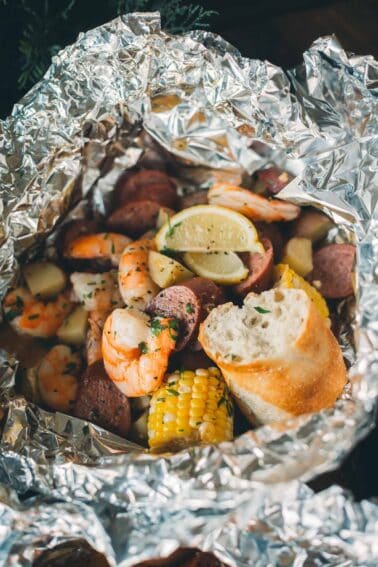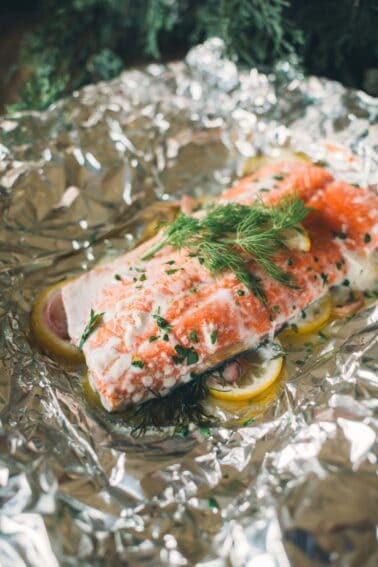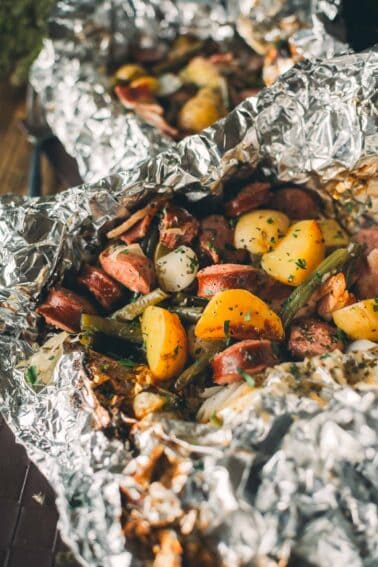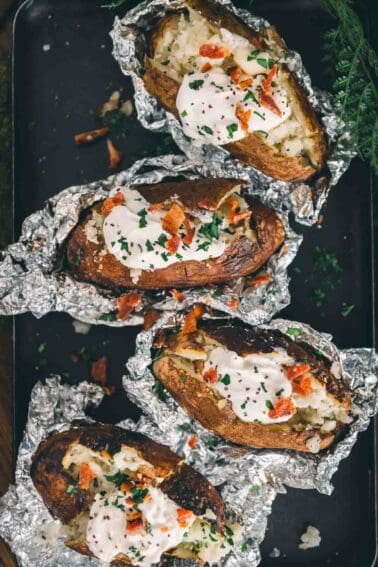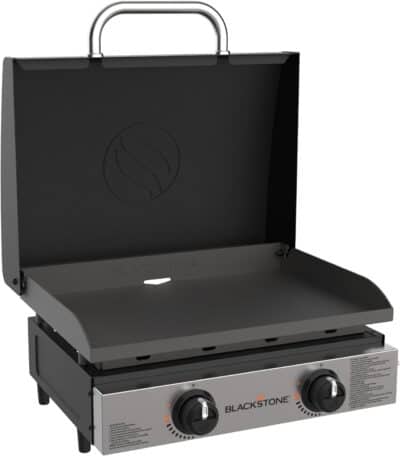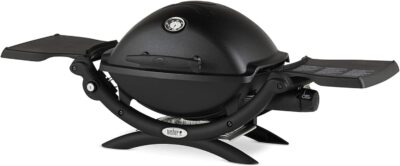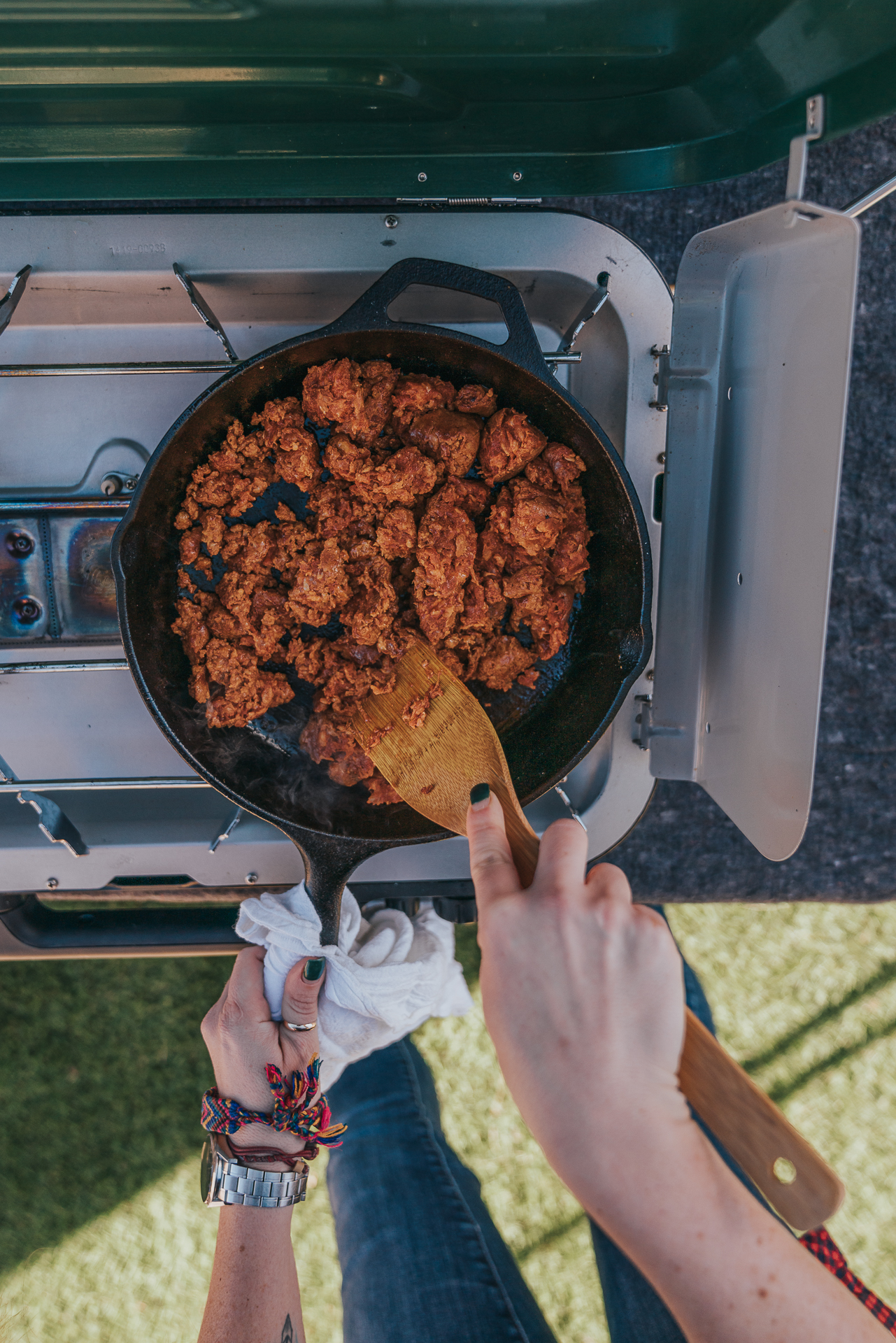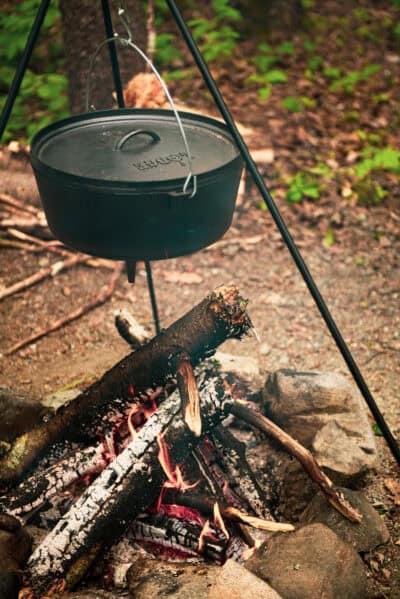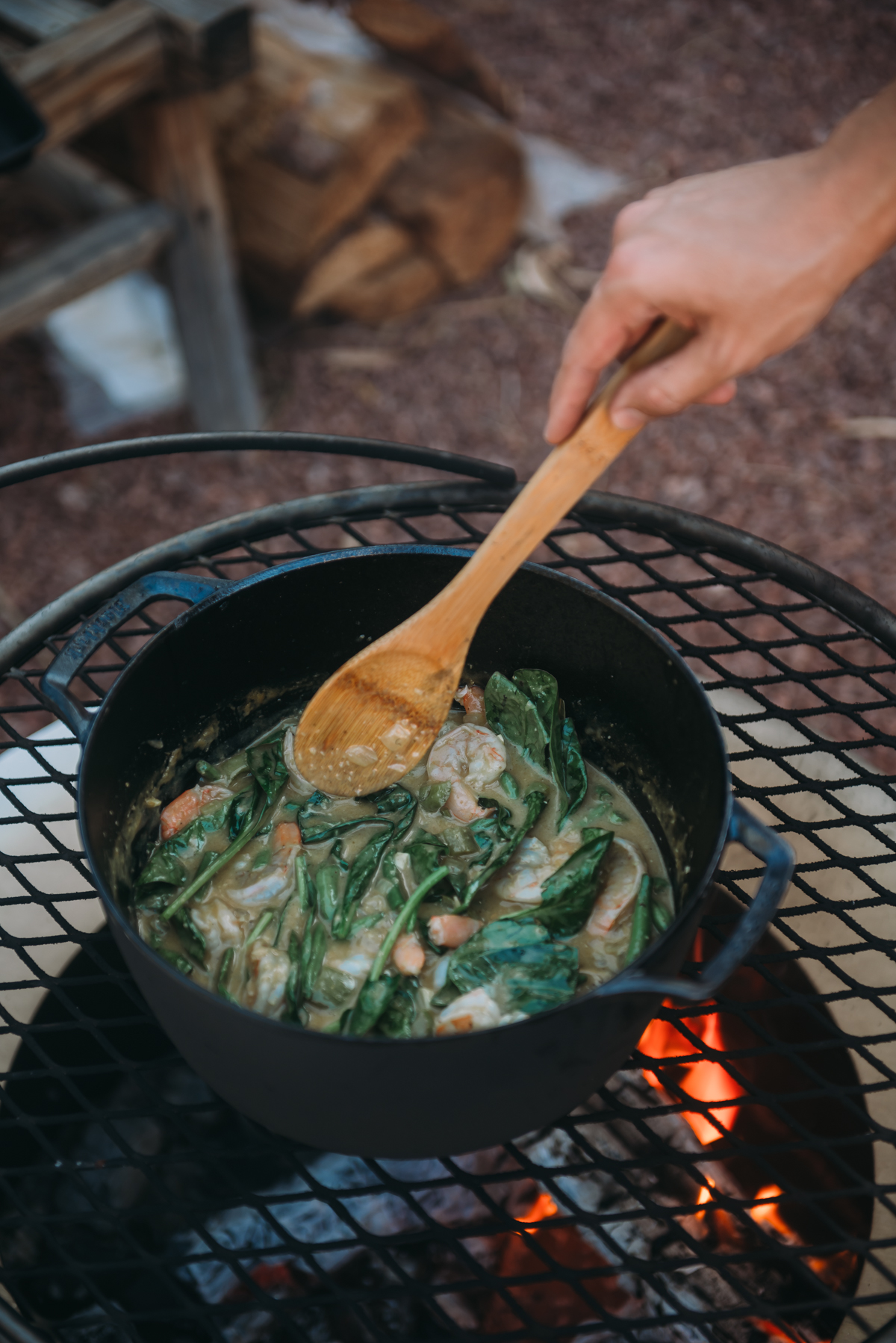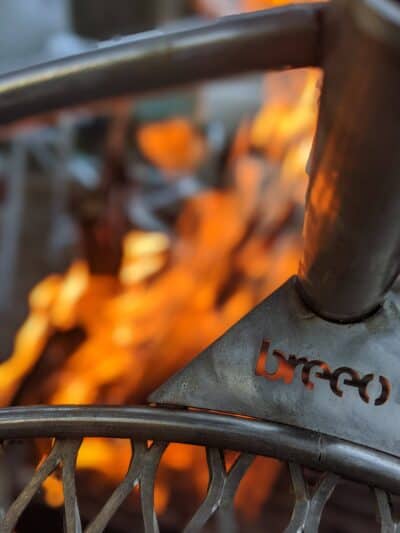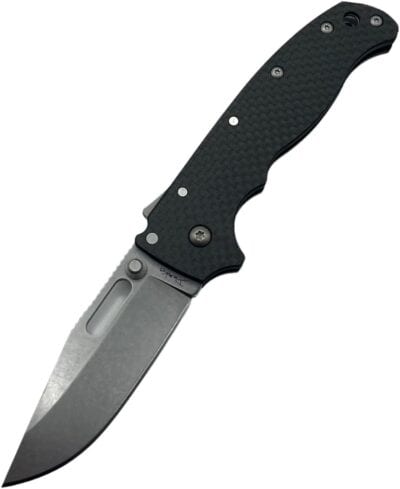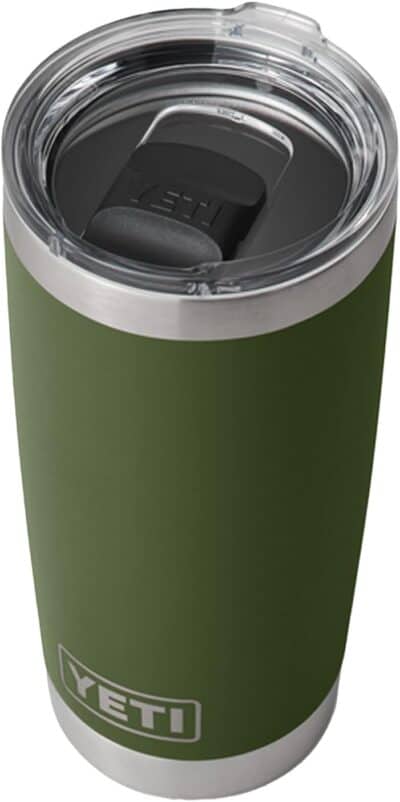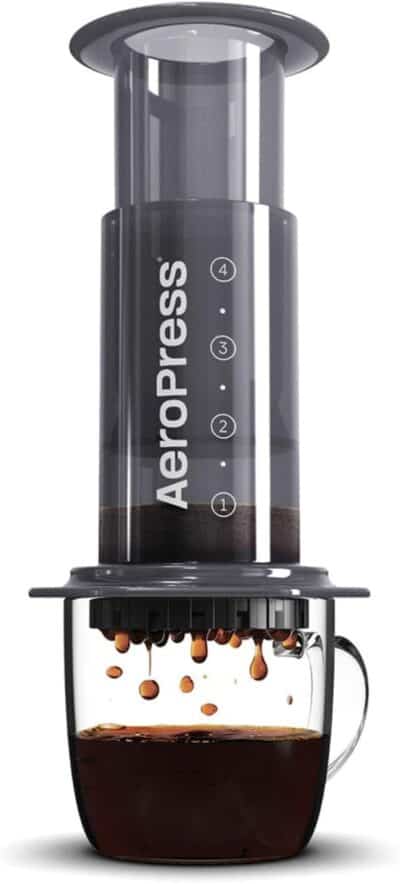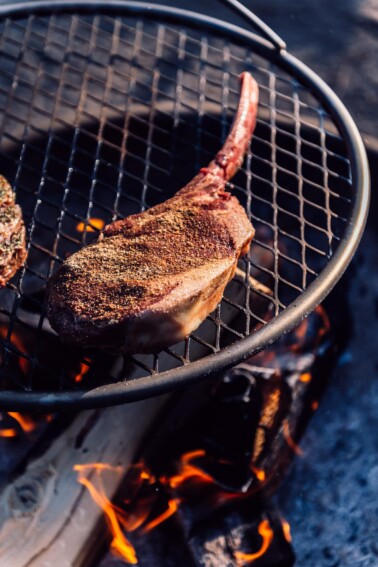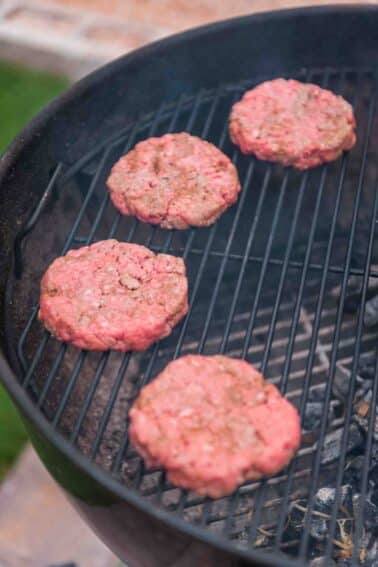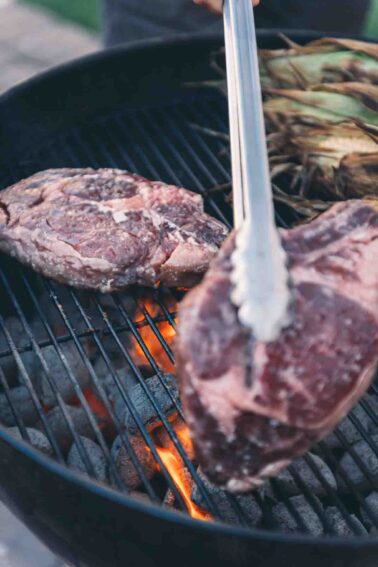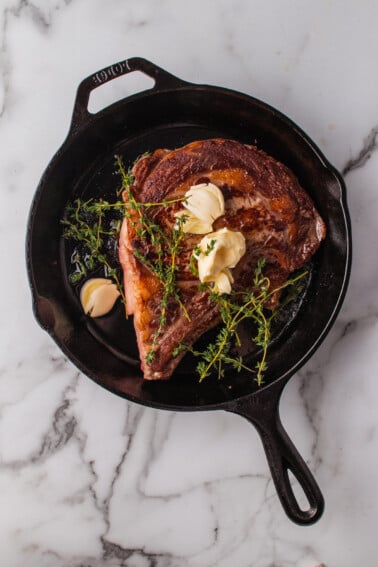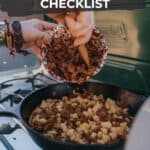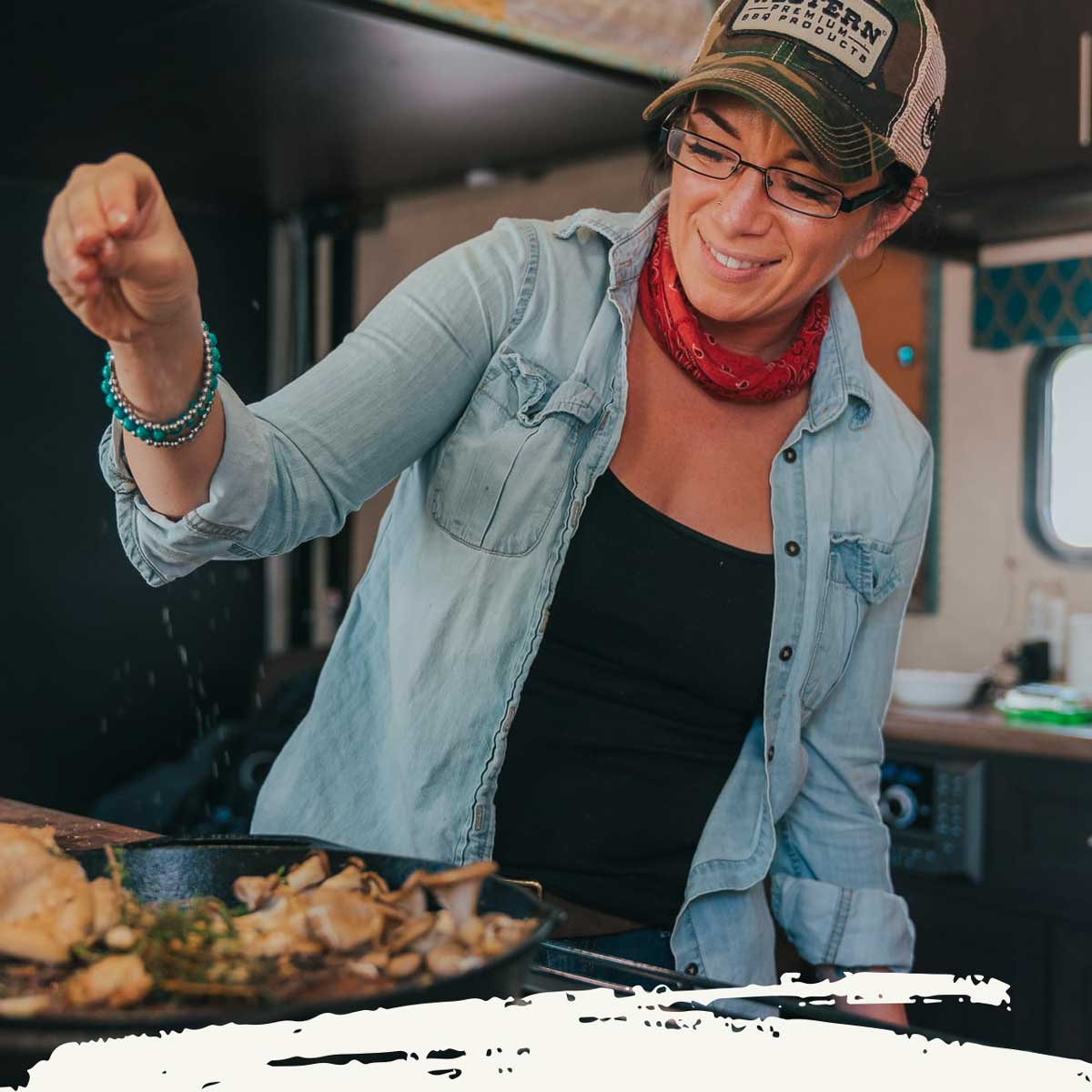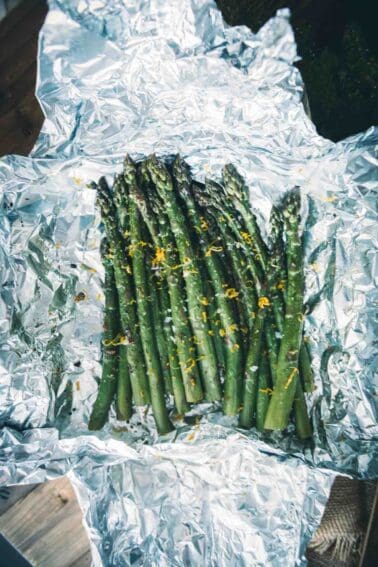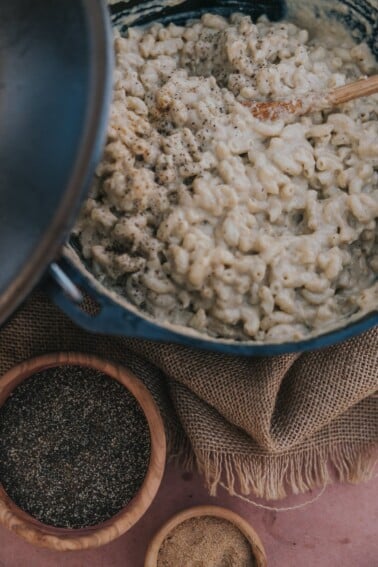The crackling campfire, the fresh mountain air, the… burnt hot dogs, and gritty coffee? Not on our watch. A stellar outdoor adventure deserves equally stellar campfire recipes, and it all starts with a well-planned camp kitchen.
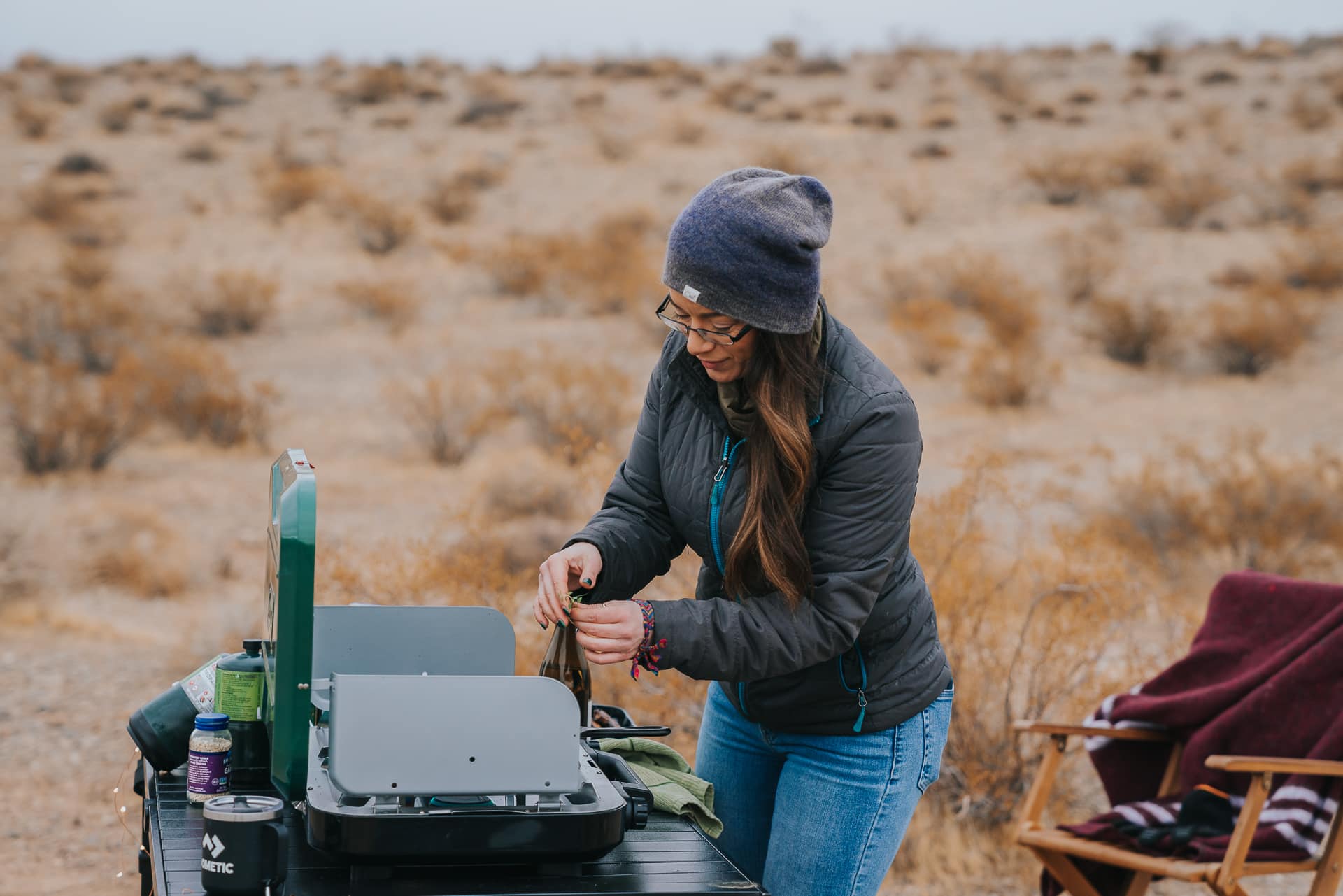
Table of Contents
- WHAT IS A CAMPING KITCHEN?
- DOWNLOAD THE CAMP KITCHEN CHECKLIST
- Camping Kitchen Checklist
- Girl Carnivore Pro Tips for setting up a Camp Kitchen
- Easy Camping Recipes
- WHAT DO YOU (actually) NEED for a camp kitchen?
- Our favorite Camp Kitchen Gear
- Useful Equipment
- Useful Equipment
- PRE-TRIP CAMP KITCHEN PLANNING
- SETTING UP YOUR CAMP KITCHEN
- More Helpful Guides
After years of camping and cooking across the country, we’ve learned how to transform basic campfire fare into outdoor feasts. This guide will help you set up a functional and easy-to-manage camp kitchen, making sure your outdoor culinary adventures are memorable for all the right reasons.
To make packing a breeze, we’ve created a comprehensive, downloadable checklist. This foolproof guide covers everything from essential gear to game-changing extras, turning camp cooking from a chore into a highlight of your trip.
WHAT IS A CAMPING KITCHEN?
A camping kitchen is an organized outdoor space for meal preparation, cooking, storage, and cleanup. It can be as simple as a portable stove and a few utensils or as elaborate as a fold-out all-in-one kitchen unit (though we are firm believers in less-is-more when it comes to camping). The key is to create a setup that meets your specific camping needs without overcomplicating things.
Camp kitchens typically include:
- A cooking area (camp stove, grill, or fire pit with grate)
- Food prep space
- Storage for food and equipment
- A washing station
Remember, the goal is to pack smart, not heavy. A well-organized camp kitchen enhances your camping trip by making meal preparation easier and more enjoyable and, most importantly, minimizes stress. And anyone who has ever cooked while camping understands what we mean about stress….
Use our comprehensive checklist to ensure you have all the essentials for your next camping trip.
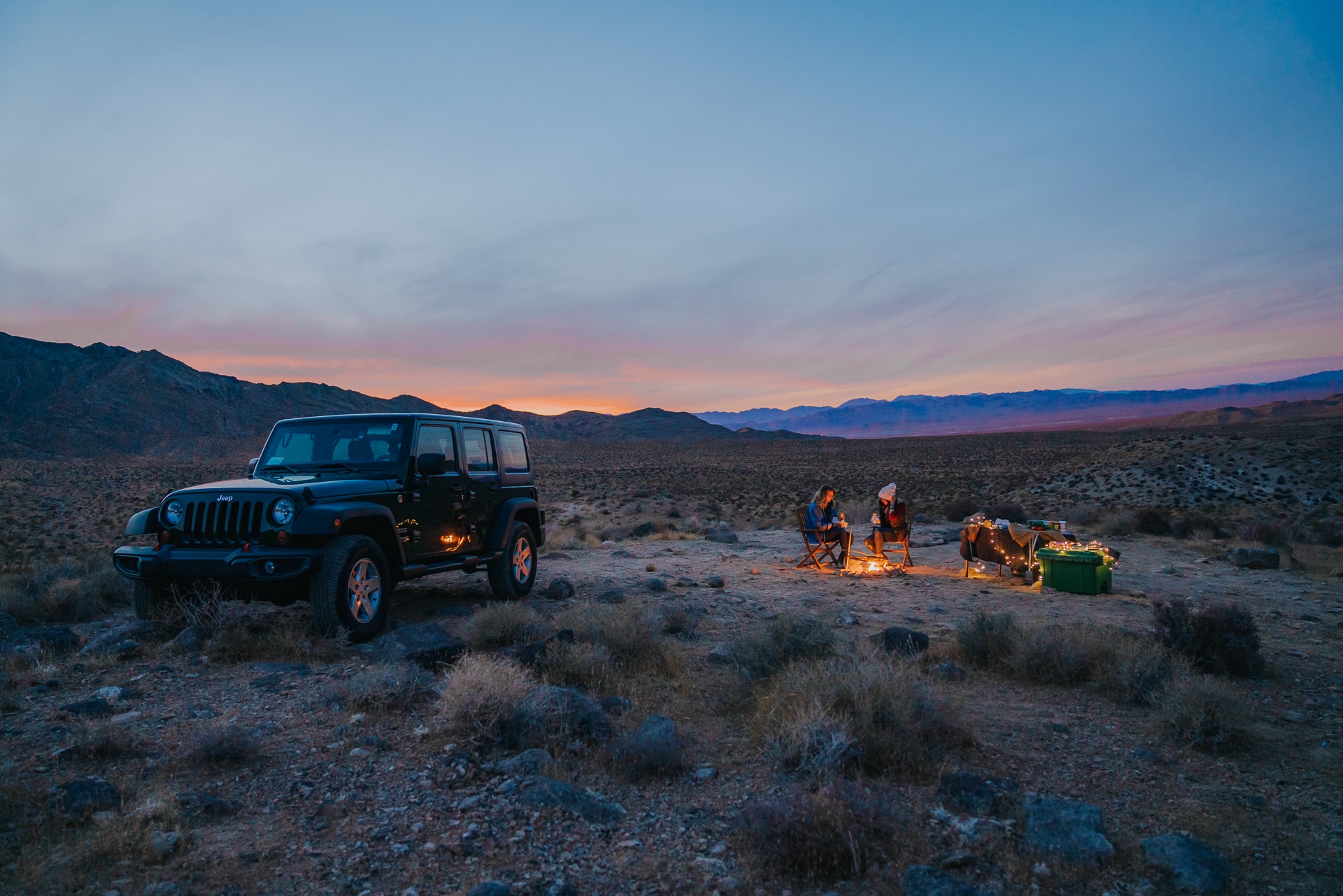
DOWNLOAD THE CAMP KITCHEN CHECKLIST
Camping Kitchen Checklist
A well-organized camp kitchen is the foundation for delicious, stress-free meals in the great outdoors. Use this checklist to make sure you have all the essentials for your next camping adventure.
Before You Go:
Plan Your Meals
- Consider trip length, climate, and group dietary needs
- Choose recipes suitable for your camping style. Check out all of our camping recipe ideas for inspo.
- Prioritize shelf-stable items for longer trips or hot weather
Choose Your Cooking Method
- Options: Camp stove, grill, or open fire
- Pack appropriate equipment for your chosen method (don’t stress, we cover all of this below)
Pack Smart
- Start with essentials: cookware, utensils, food storage
- Add comfort items if space allows (e.g., portable table, chairs)
- Remember: Everything you pack, you’ll need to unpack and carry
CAMP KITCHEN ESSENTIALS
Cooking Equipment:
□ Camp stove and fuel
□ Portable grill (optional)
□ Cast iron skillet or Dutch oven
□ Pots and pans (suitable size and material)
Food Prep and Storage:
□ Cutting board (easy-to-clean plastic)
□ Knives (chef’s knife and paring knife)
□ Cooler (sized for trip duration and group size)
□ Plates, bowls, cups, and utensils (reusable)
□ Dishwashing station (two collapsible bins)
□ Storage containers (for leftovers and dry goods)
Other Essentials:
□ Fire starters (matches or lighter)
□ Can opener
□ Cooking utensils (tongs, spatula, etc.)
□ Oven mitts
□ Trash bags
□ Water containers and/or filtration system
□ Biodegradable dish soap and scrub brush
□ Quick-dry dish towels
□ Basic spices (salt, pepper, etc.)
Pro Tips:
- Choose equipment that serves multiple purposes to save space.
- Opt for durable, lightweight materials when possible.
- Pack a portable water filter for areas with freshwater sources.
- Use collapsible items (bins, containers) to save space when not in use.
- Always practice Leave No Trace principles, including proper waste management.
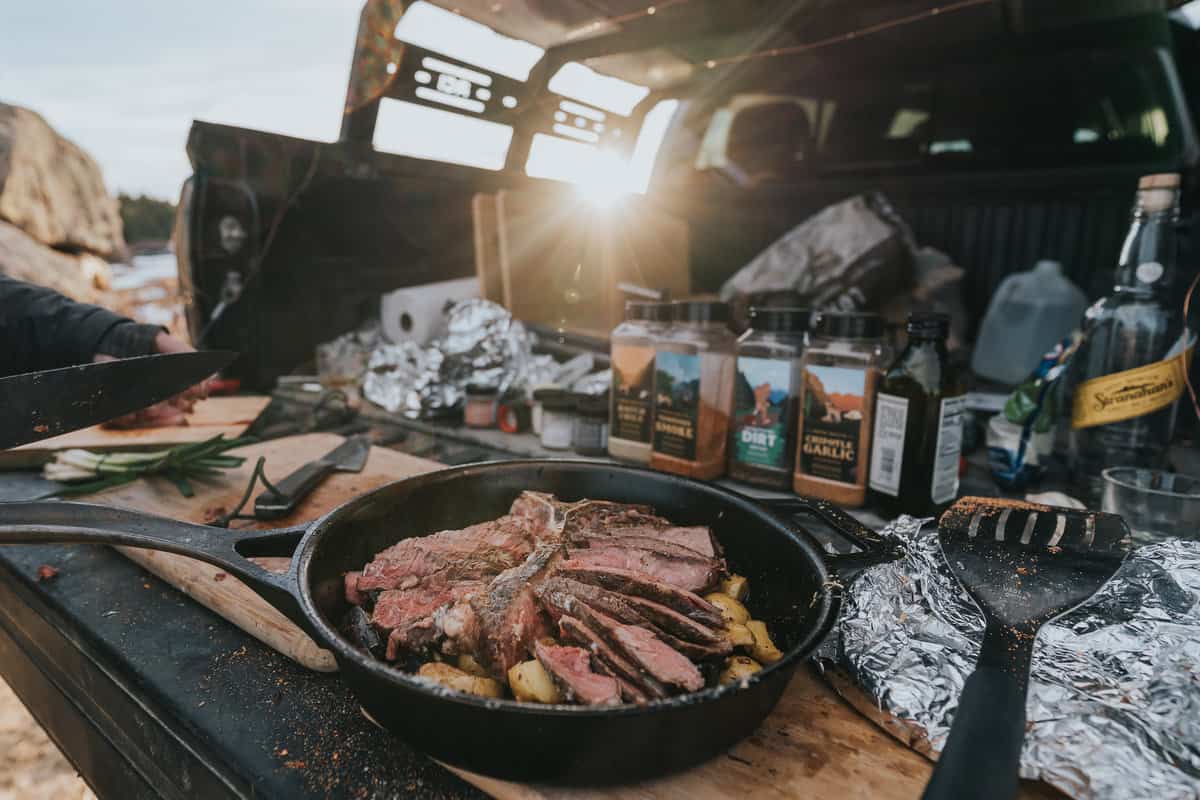
Girl Carnivore Pro Tips for setting up a Camp Kitchen
- Plan Your Campsite Layout: Upon arrival, scout your campsite for a shady area to store your cooler and check for wildlife like bears or raccoons that might require special food storage solutions.
- Minimize Waste: Plan your meals to avoid excessive food waste. Invest in reusable plates and utensils to reduce single-use items.
- Keep it Simple: Camp cooking is all about enjoying the outdoors. Don’t overcomplicate your meals. Opt for easy-to-prepare dishes that utilize shelf-stable ingredients.
- Safety First: Review campfire safety rules with children and practice safe food handling techniques to prevent foodborne illness.
- Leave No Trace: We should always leave things better than we found them.
Easy Camping Recipes
Seafood
Shrimp Boil Foil Packets
Seafood
Grilled Salmon in Foil
Campfire Recipes
Foil pack Sausage and Potatoes
Campfire Recipes
Campfire Baked Potatoes

WHAT DO YOU (actually) NEED for a camp kitchen?
Your camp kitchen setup should match your camping style and trip length. Here’s a guide to help you pack efficiently:
Basic Setup (Short Trips / Car Camping):
- Portable stove (e.g., 2-burner Coleman)
- Small cooler
- Frying pan and pot
- Outdoor serving ware
- Water containers
- Trash bags
Extended Trips / Gourmet Camping:
- Larger cooler (e.g., Yeti)
- Griddle (e.g., Blackstone griddle) or portable grill
- Cast-iron Dutch oven
- Additional cookware and utensils
Don’t Forget:
- Kitchen utensils and grill tools
- Water bottles for each camper
- Cutting board and knives – we opt for plastic cutting boards when camping for easy clean up
- Dishwashing supplies
Remember:
- Pack only what you’ll use
- Consider weight and space limitations
- Prioritize versatile, multi-use items
- Resist the temptation to buy unnecessary gadgets
Pro Tip: Test all of your equipment (new and old) at home before your trip to make sure you know how to use it effectively in the field and that it still functions the way it should.

Our favorite Camp Kitchen Gear
Choosing the right gear can upgrade your camp cooking experience. We’ve seen campers use various outdoor cooking equipment, from basic cookware to portable solar ovens. Here are some top picks for different camping styles:
Car Camping:
- Coleman Stove: Reliable and versatile for various cooking methods.
- Portable Grill: Great for grilled meats and veggies if you have the space.
- Blackstone Griddle: Excellent for old-school Boy Scout camping vibes (pancake breakfast, anyone?) and even heat distribution.
Useful Equipment
Here’s some cooking gear I really like.
Open Fire Cooking or Backpacking:
- Breeo Outpost: Adjustable grill grate for easy fire management for when you know you’ll have a firepit
- Lightweight Camp Stove: Our go-to portable cooking stove that fits in our rucksack is the MSR Pocketrocket 2.
Water Management:
- Portable Water Filter (e.g., Berkey Water Filter, LifeStraw): For camping near freshwater sources
- Collapsible Water Container: For campgrounds with potable water
What we never leave home without:
- AeroPress Coffee Maker: This lives in our rucksack as part of our essentials
- Instant Coffee: We clearly have priorities
- Yeti Insulated Cup: Because the coffee has to stay warm.
- Pocket Knife: This seems like an odd thing for a camp checklist, but we can’t tell you how essential this one little knife has been every time we’re camping.
Useful Equipment
Here’s some cooking gear I really like.
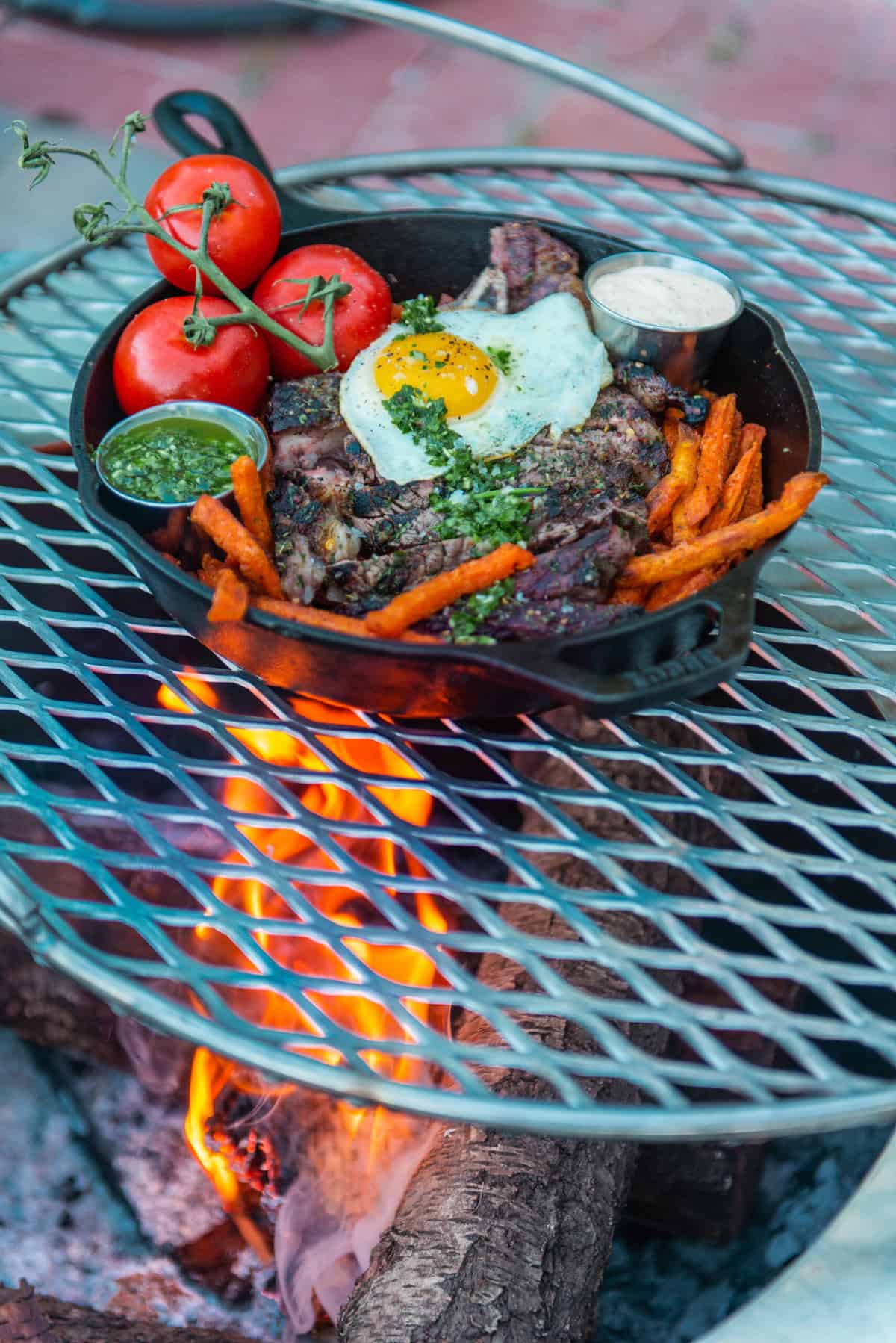
Remember: Choose gear that suits your camping style, group size, and the types of meals you plan to prepare.
“I love bringing my portable Blackstone griddle for camping. It runs off the little propane tanks, so there is no need to have a fire and worry about getting your cast iron to heat up correctly or getting ash into your food. You can make a variety of delicious and healthy meals on the Blackstone!”
— Lara Clevenger MSH, RDN, CPT LaraClevenger.com
PRE-TRIP CAMP KITCHEN PLANNING
Proper planning can help with stress-free meal prep in the outdoors. Follow these steps to organize your camp kitchen effectively:
- Meal Planning
• Consider trip length and climate
• Account for group dietary needs
• Plan meals that match your cooking equipment
• For longer trips or hot weather, prioritize shelf-stable foods - Choose Your Cooking Method
• Options: Grilling, camp stove, or open fire
• Select appropriate equipment for your chosen method - Create a Packing List
• Essential gear: Cookware, utensils, food storage
• Safety items: First aid kit, fire extinguisher
• Cleaning supplies: Biodegradable soap, scrubbers, towels - Smart Packing Tips
• Use clear, sealable containers for dry goods
• Pre-measure ingredients for planned meals
• Pack a spice kit for easy flavor adjustments - Consider Your Transportation
• Pack heavy items at the bottom of your vehicle
• Keep frequently used items accessible
• Use soft-sided coolers for easier packing
Remember: Prioritize essentials over luxuries. Only pack extra comforts if you have ample space and they significantly enhance your camping experience.
Pro Tip: Do a “dry run” at home. Set up your camp kitchen to ensure you have everything you need and know how to use it efficiently.
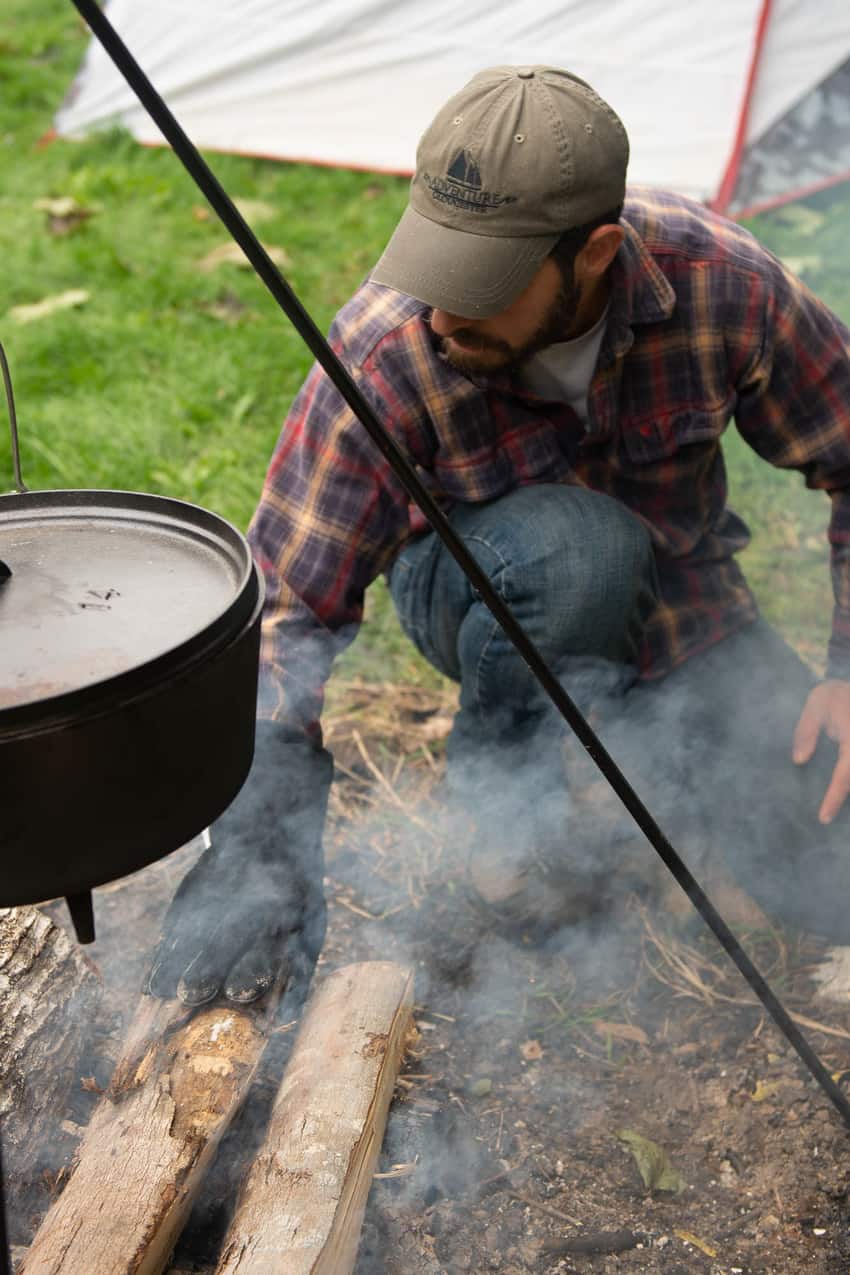
SETTING UP YOUR CAMP KITCHEN
Once you’ve arrived at your campsite, follow these steps to efficiently set up your camp kitchen:
- Choose Your Location
• Find a flat, stable area away from tents
• Look for natural windbreaks if possible
• Ensure safe distance between cooking and seating areas - Set Up Cooking Station
• Position the stove or grill on a stable surface
• Establish a prep area (use a table or flat rock)
• Keep fuel sources safely away from heat - Organize Food Storage
• Place cooler in a shaded spot
• Use bear-proof containers if necessary
• Keep dry goods in sealed, waterproof containers - Create a Washing Station
• Set up collapsible wash basins
• Designate areas for clean and dirty dishes
• Position away from water sources to minimize environmental impact - Establish a Trash Management System
• Use sealed containers or hang bags to deter wildlife
• Separate recyclables and compostables if possible - Add Comfort and Convenience
• Set up a shelter or screen tent for bug protection
• Arrange a seating area near (but not too close to) the cooking area
• Consider lighting for evening cooking and dining. Plus, who doesn’t love some solar lamps and lanterns for a little ambiance and to attract the bugs?
Pro Tips:
- Be prepared to adapt your setup based on weather conditions
- Keep frequently used items easily accessible
- Review safety rules with all campers upon arrival
- Always follow Leave No Trace principles
Safety and Space: Set up a safe space between cooking and seating areas. This is especially important if you’re camping with kids. And remember to review camping safety rules with younger family members.
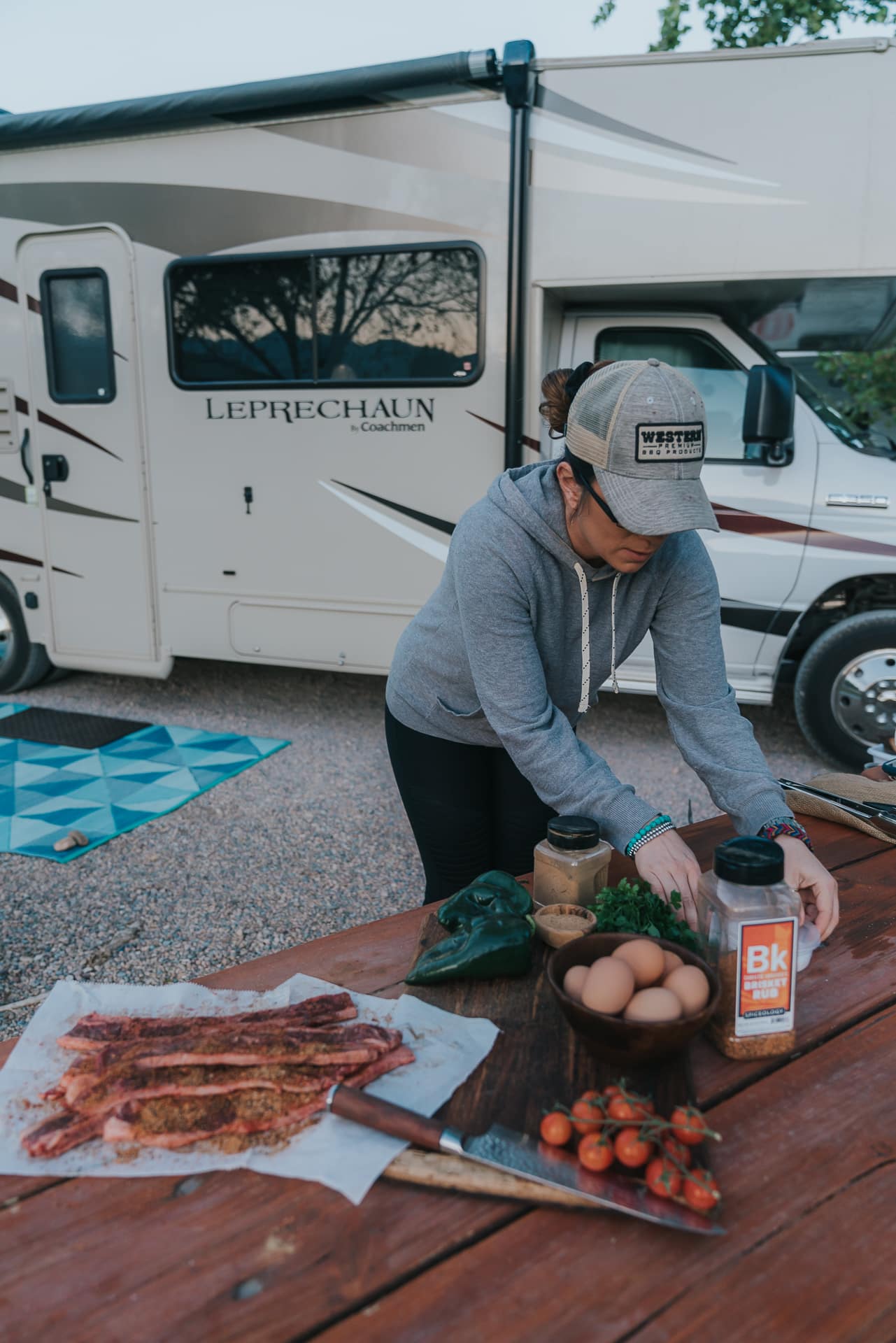
“We do remote tent camping, so preparation is everything, and because we are hiking long distances, we don’t carry a lot of items. These items are a must in the camp kitchen: A water purifier, resealable plastic bags, which are small and lightweight and good for storing all sorts of things, waterproof matches for starting fires, a collapsible cooking pot, bowls, cups, and a plastic drip coffee cone, because we need our cup of coffee in the wilderness.”
— Jere’ Cassidy, One Hot Oven
By following this checklist and incorporating these tips, you’ll create a functional and efficient camp kitchen, ensuring a memorable camping experience filled with delicious meals and great times. Now, gather your gear, friends, family, and board games. Get outside and enjoy the magic of campfire cooking under the stars!
More Helpful Guides
This post was originally written by Sarita Harbour of An Off Grid Life for Food Drink Life and has been edited for GirlCarnivore.com
